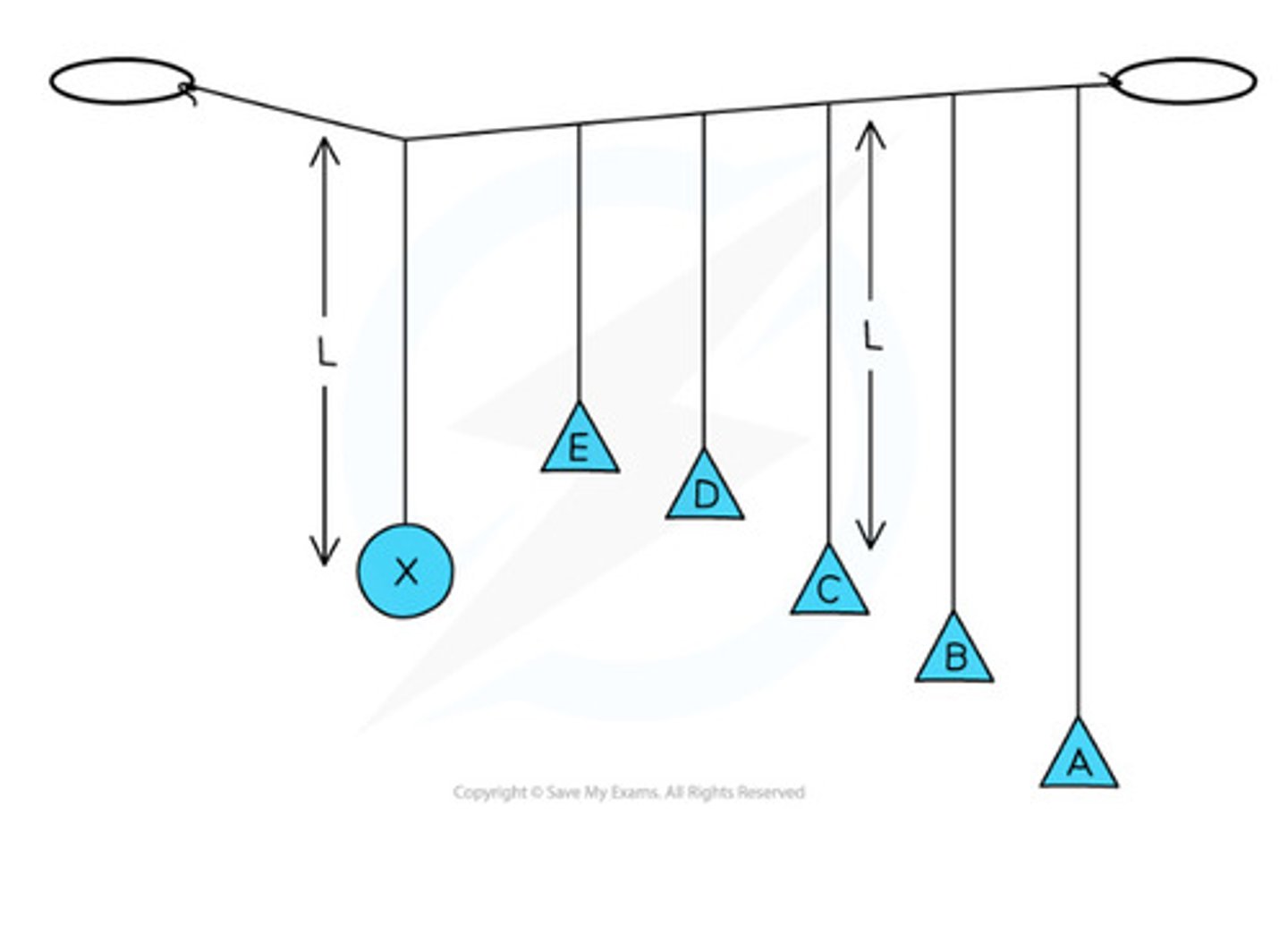SIMPLE HARMONIC MOTION TO REMEMBER
1/25
There's no tags or description
Looks like no tags are added yet.
Name | Mastery | Learn | Test | Matching | Spaced |
|---|
No study sessions yet.
26 Terms
SHM
An object's motion is simple harmonic, when the acceleration is proportional to the displacement, and always in the opposite direction to the displacement.
Displacement
The displacement of an oscillating particle is its distance and direction from the equilibrium position.
Amplitude
The maximum displacement of an oscillating particle.
Time period
The time for one complete cycle of oscillation
Frequency
The number of cycles per second made by an oscillating object.
Angular frequency, ⍵
⍵ = 2πf
Phase difference
The difference in phase between two oscillating objects. It is usually expressed in fractions of a cycle or radians.
Phase difference in radians = 2πΔt/T
Free oscillations
An object oscillates at its own natural frequency. A free oscillation may be undamped or damped.
Damped oscillations
Oscillations are damped if dissipative forces are present. The oscillator's amplitude decreases due to a damping force acting in the opposite direction to the velocity.
Light damping
The time period is independent of the amplitude so the amplitude of the oscillations steadily decreases while each cycle takes the same amount of time.
- decays exponentially w/ time

Critical damping
The oscillating system returns to equilibrium in the shortest time possible, without overshooting.
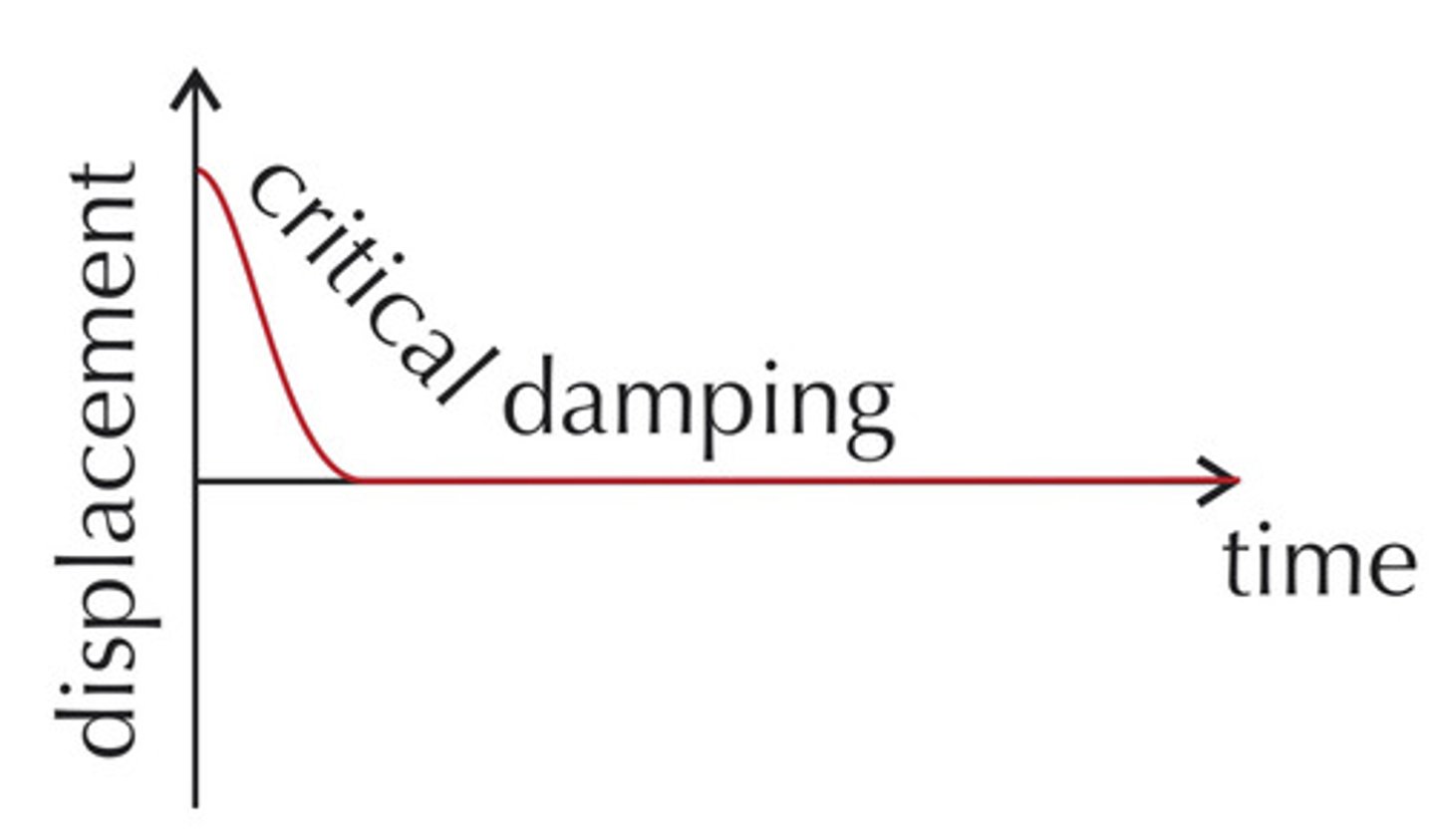
Heavy damping
The damping is so strong that the displaced object returns to equilibrium slowly, without any oscillation.

Forced oscillations
A periodic force is applied to the system. The response depends on the frequency of the periodic force (and how it compares with the natural frequency of the oscillating system).
Resonance
When the frequency of the applied force to an oscillating system is equal to its natural frequency, the amplitude of the resulting oscillations increases significantly
- at this point, the system will be transferring the maximum kinetic energy possible
Displacement (m) against time (second) graph
Sin wave
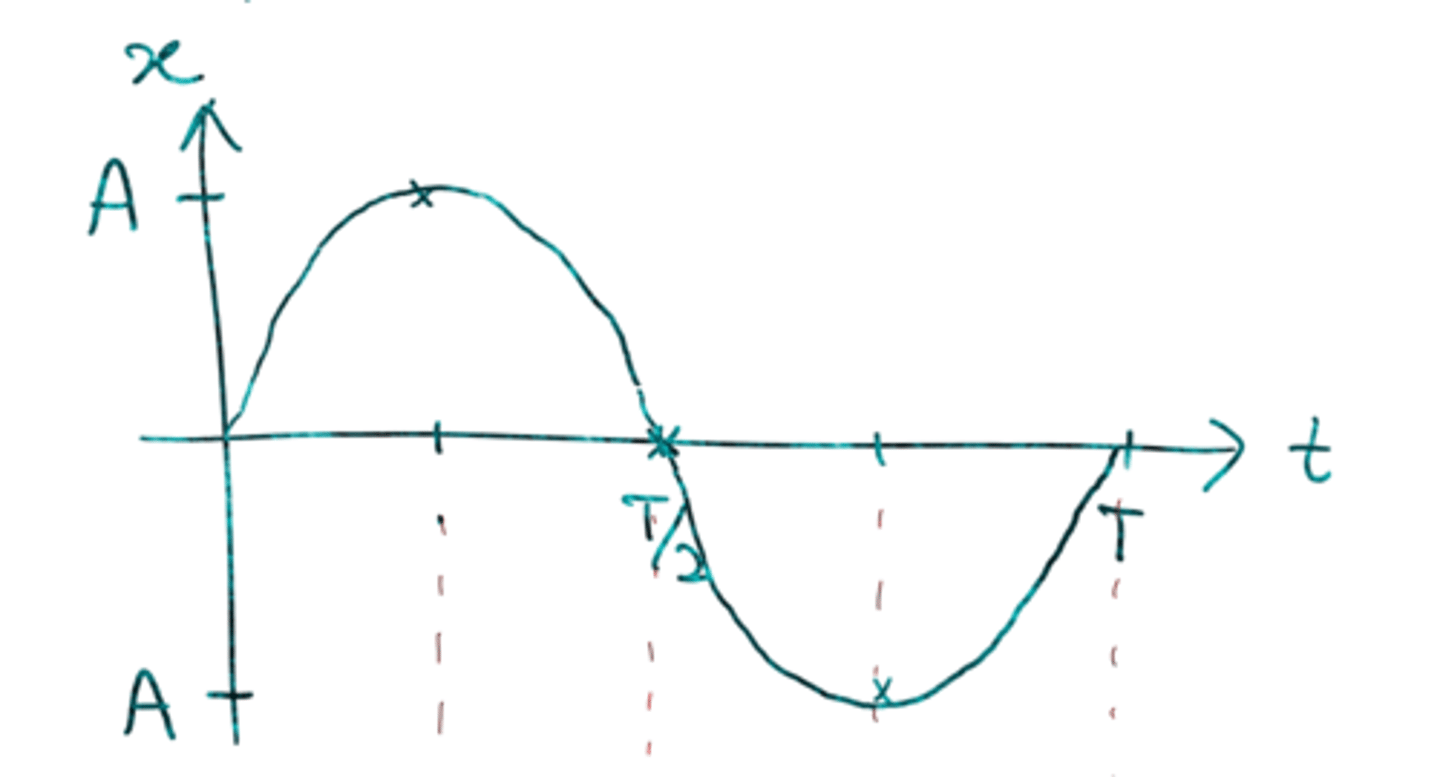
Velocity (ms⁻¹) against time (second) graph
Cos graph
- because the greatest velocity is at equilibrium
- V-t graph is 90° out of phase
(vel is the rate of change of 𝔁 ∴ gradient)
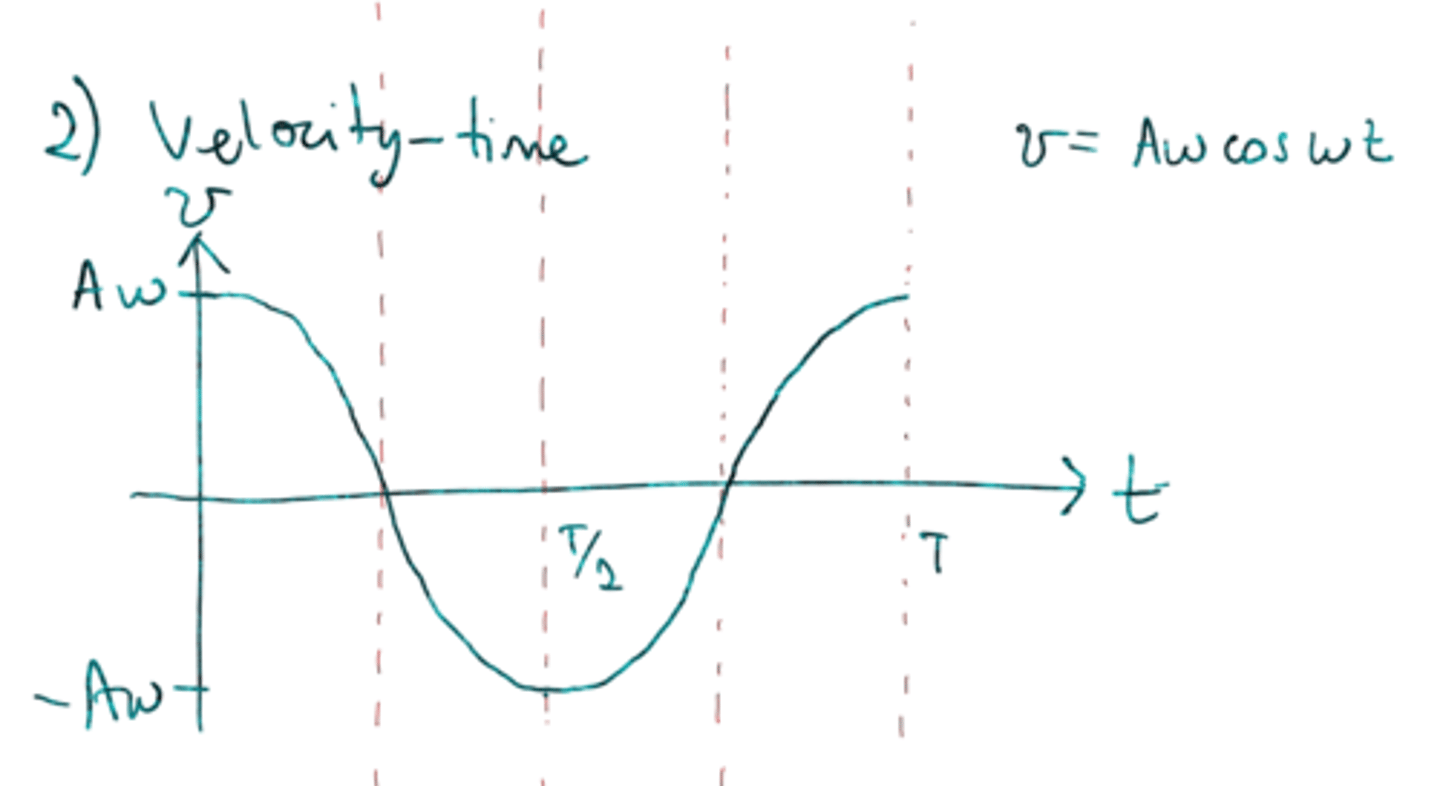
Acceleration (ms⁻²) against time (second) graph
Sin graph
a=-⍵²𝔁
F=-k𝔁 & F=ma
a=-𝔁
so basically its the 𝔁 vs t graph but the inverse bc its negative 𝔁

Key features of a lightly damped system
- There are many oscillations represented by a sine or cosine curve with gradually decreasing amplitude over time
- The amplitude decreases exponentially
- The frequency of the oscillations remain constant, this means the time period of oscillations must stay the same and each peak and trough is equally spaced

Key features of a critically damped system
- This system does not oscillate, meaning the displacement falls to 0 straight away
- The graph has a fast decreasing gradient when the oscillator is first displaced until it reaches the x axis
- When the oscillator reaches the equilibrium position (x = 0), the graph is a horizontal line at x = 0 for the remaining time
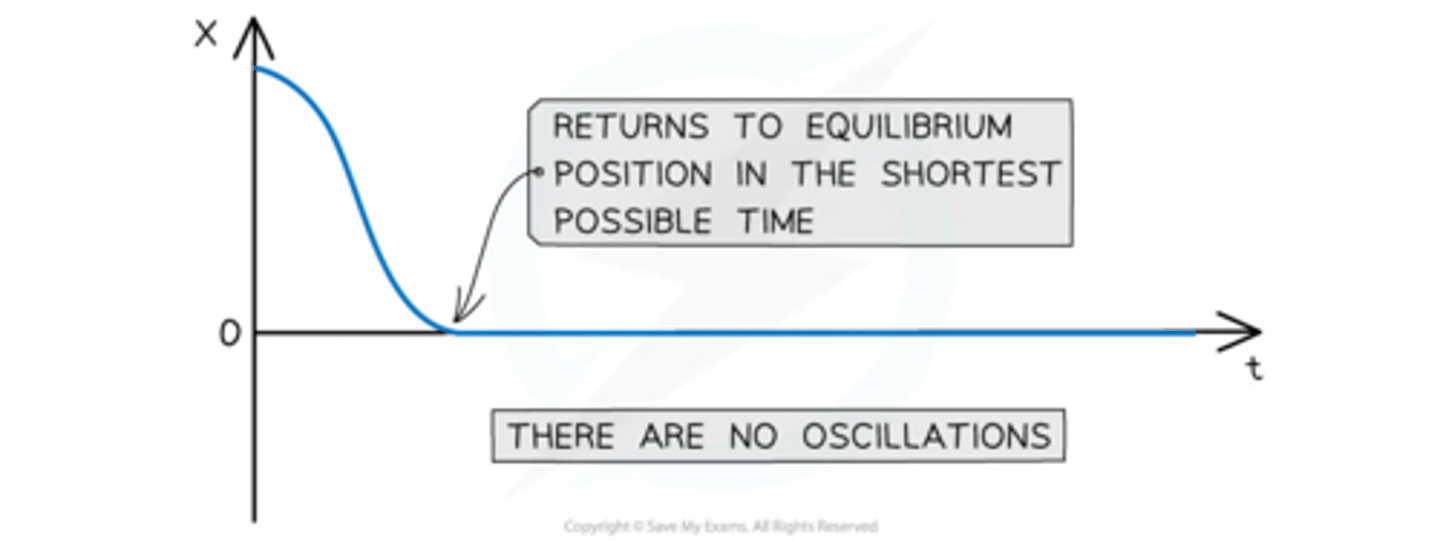
Key features of a heavily damped system
- There are no oscillations. This means the displacement does not pass zero
- The graph has a slow decreasing gradient from when the oscillator is first displaced until it reaches the x axis
- The oscillator reaches the equilibrium position (x = 0) after a long period of time, after which the graph remains a horizontal line for the remaining time

The Effects of Damping on Resonance
Damping reduced the sharpness of resonance and reduces the amplitude at resonant frequency
- the resonance peak broadens
- the resonance peak moves slightly to the left of the natural frequency when heavily damped
- has no effect on the f₀

Amplitude against f₀ graph
When f < f0, the amplitude of oscillations increases
At the peak where f = f0, the amplitude is at its maximum. This is resonance
When f > f0, the amplitude of oscillations starts to decrease

Natural frequency (f₀)
The frequency of an oscillation when the oscillating system is allowed to oscillate freely
Driving frequency
The frequency of forced oscillations
OR
The frequency of the applied force
Examples of resonance effects
An organ pipe, where air resonates down an air column setting up a stationary wave in the pipe
Glass smashing from a high pitched sound wave at the right frequency
A radio tuned so that the electric circuit resonates at the same frequency as the specific broadcast
Barton's pendulums
Most strings swing with a low amplitude but pendulum C with the same length L has the largest amplitude
- bc f₀ = f(pendulum)
The phase of the oscillations relative to the driver are:
- pendulums E and D with lengths < L are in phase
- pendulum C with length = L is 0.5π out of phase
- pendulums B and A with lengths > L are π out of phase
